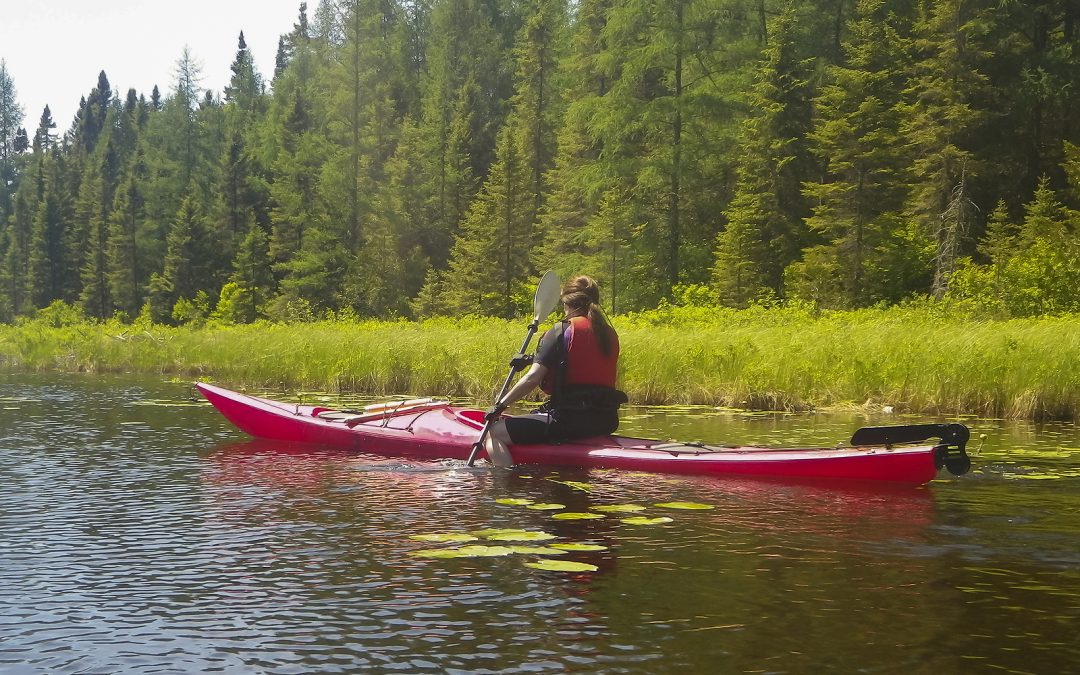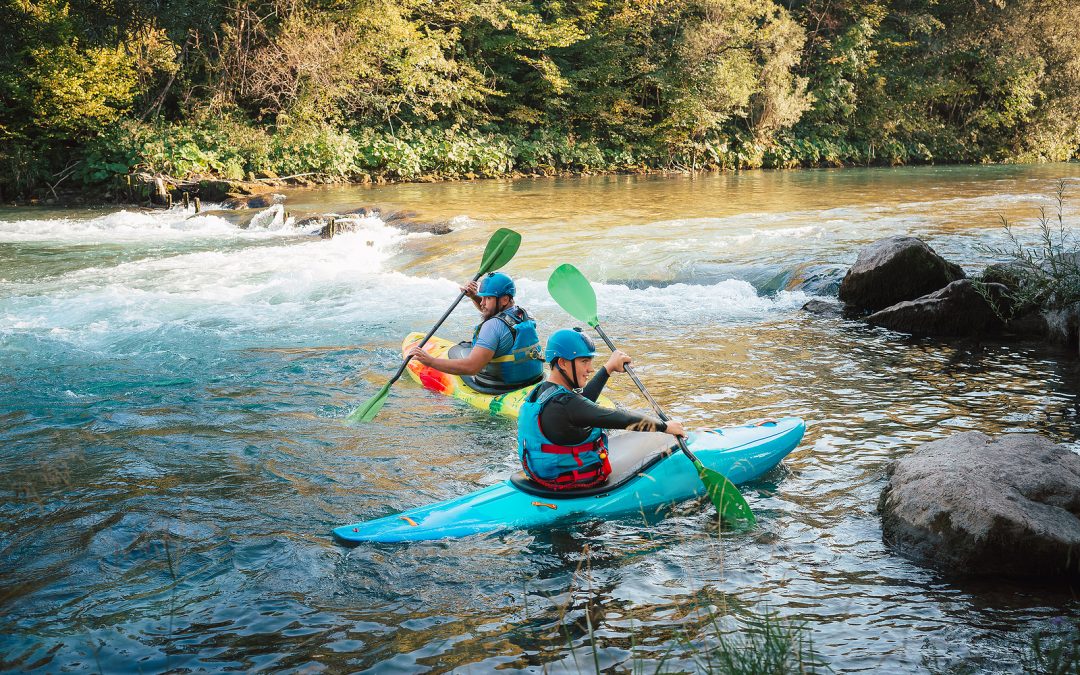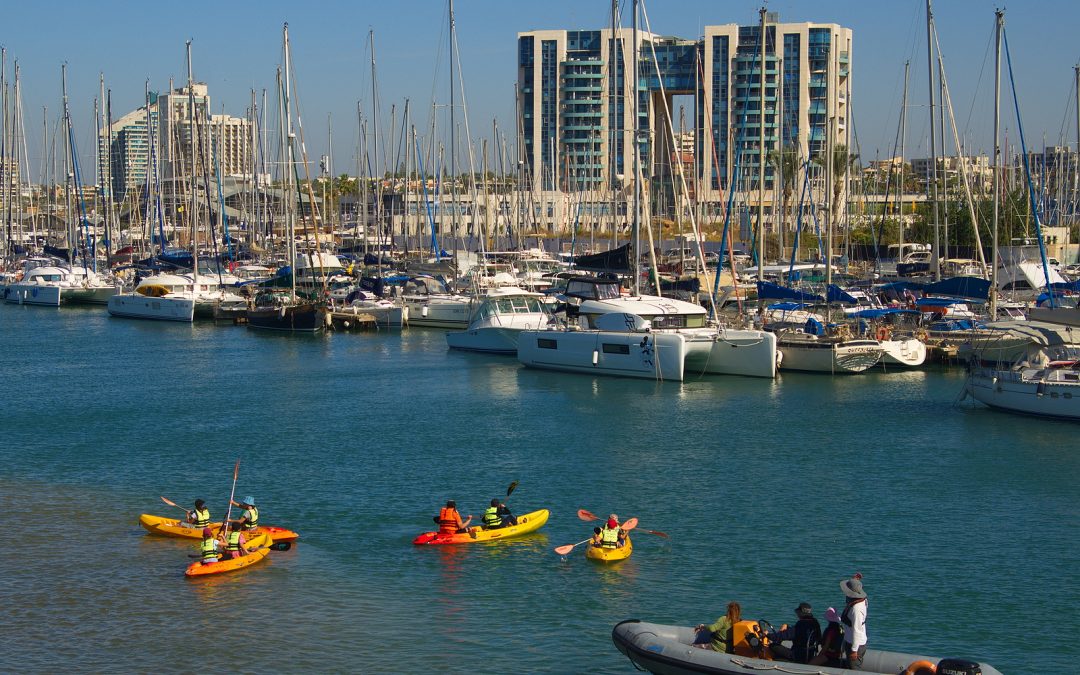Performing a kayak roll is an essential skill for any avid kayaker. This skill allows paddlers to right themselves when their kayak capsizes, preventing the need to exit the boat and potentially avoiding dangerous situations. Whether it’s a surprise flip in rough rapids or an intentional roll to cool down on a hot day, mastering the kayak roll is vital to enjoying a safe and successful paddling experience.
To learn the kayak roll, starting with the proper equipment and safety measures is crucial. This includes selecting an appropriate kayak, paddle, and personal flotation device (PFD). It’s also essential for beginners to practice in a regulated atmosphere, such as a pool or calm body of water, before attempting a roll in more challenging conditions. Additionally, working with an experienced instructor or participating in a structured class can be incredibly beneficial to learn the correct techniques and build confidence.
The kayak roll involves several key components, such as consistent paddle placement, precise body movement, and well-timed breathing. By breaking down the process into smaller pieces and focusing on developing each skill, kayak enthusiasts can smoothly progress toward mastering the role and enhancing their overall paddling capabilities.
Understanding the Kayak Roll
Significance of a Kayak Roll
A kayak roll is a vital skill for kayakers to master, allowing them to right themselves after capsizing without exiting the kayak. Learning this maneuver increases safety and confidence on the water, enabling paddlers to tackle more challenging conditions. It also saves time and energy, as the kayaker can quickly recover from a capsize without needing to swim to shore or rely on a companion to assist.
Different Types of Kayak Rolls
There are several types of kayak rolls, each with its advantages and techniques. The two most common rolls are the C-to-C Roll and the Sweep Roll:
C-to-C Roll
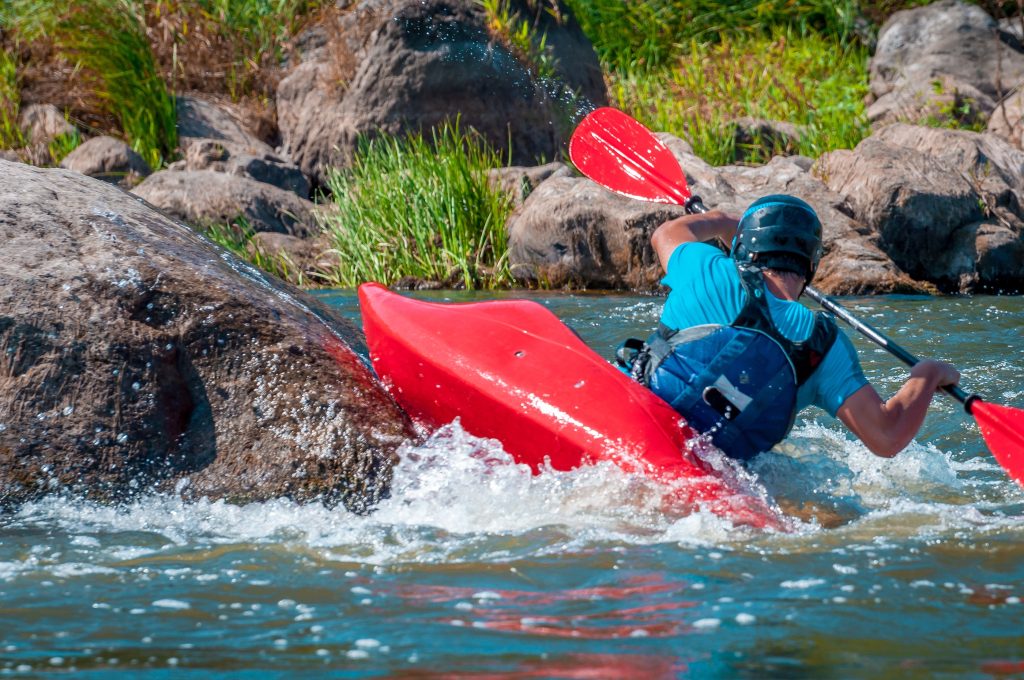
The C-to-C Roll is named for the movement’s resemblance to a C shape. The paddler tucks forward towards the deck, reaches out with the paddle, and rotates the hips to bring the boat upright. This role is characterized by its compact body positioning and powerful hip snap, which provides more control and stability during the registration.
Here’s a step-by-step guide on how to perform the Sweep Roll:
1. Setup Position:
- Before attempting the roll, ensure you are in the setup position. Keep your upper body low, head down, and the paddle close to the water’s surface.
2. Hand Placement:
- Hold the paddle with both hands, one hand on the paddle shaft and the other on the blade. The writing on the paddle blade should be the one opposite the side you’ll be rolling on.
3. Submerge the Paddle Blade:
- Start the Sweep Roll by submerging the paddle blade of the hand on the paddle shaft into the water on the side you’re rolling to. The paddle blade should be fully submerged and positioned near your knee.
4. Sweep the Paddle:
- Initiate the sweep by extending your lower arm while keeping the paddle close to the kayak’s surface. Sweep the paddle in a wide arc away from the kayak, leading with the blade in the water.
5. Engage the Hip Snap:
- As you sweep the paddle, perform a strong hip snap by quickly rotating your hips and torso towards the paddle blade in the water. This action will bring the kayak upright as you finish the sweep.
6. Complete the Roll:
- Continue sweeping the paddle until it reaches a position parallel to the kayak’s hull, keeping your head low and close to its surface. The kayak should now be fully upright.
7. Recover the Paddle:
- Once the kayak is upright, bring the paddle close to the kayak’s deck to prevent it from catching water. Position yourself back in a stable paddling position.
8. Practice on Both Sides:
- Practicing the Sweep Roll on both the right and left sides is essential to be proficient in different situations.
Tips:
- Keep the paddle close to the kayak’s surface throughout the sweep for maximum leverage.
- Remember to engage your core muscles and use a strong hip snap to aid the roll.
- Practice the Sweep Roll in calm water before attempting it in more challenging conditions.
Mastering the Sweep Roll takes practice and persistence, but it’s an essential skill for kayakers, especially those who paddle in rough water or engage in whitewater activities. Regular exercise will build your confidence and ability to roll your kayak efficiently in various situations. If you’re new to cruising, consider seeking instruction from a certified kayak instructor to ensure you learn the correct technique and develop good habits.
Pros:
Versatility: The C-to-C roll is a versatile rolling technique that works well in various conditions, including calm and white water.
Easy to Learn: Many paddlers find the C-to-C roll relatively more accessible than other rolling techniques. It involves a straightforward movement pattern.
Minimal Paddle Movement: During the roll, the paddle moves in a simple arc from one side of the kayak to the other, making it less complicated than other rolls.
Quick Recovery: Once mastered, the C-to-C roll allows rapid recovery, allowing you to get back upright efficiently and continue paddling.
Works with Different Paddle Grips: The C-to-C roll can be performed with standard and non-standard paddle grips, accommodating different paddlers’ preferences.
Cons:
Dependent on Core Strength: The C-to-C roll requires good core strength to execute the hip snap effectively. Beginners might only initially once develop the necessary strength and muscle memory.
Reliance on the Paddle: Some paddlers find that the C-to-C roll relies heavily on the paddle for support, which may lead to a weaker roll if not performed correctly.
Limited Adaptability: While the C-to-C roll is versatile, it may only be as effective in some situations. Different rolling techniques like the sweep or hand roll might be more suitable for more challenging conditions.
Difficult in Deeper Water: The C-to-C roll may need more leverage to bring the kayak upright in deeper water, making it less effective in such situations.
May Require Frequent Practice: Like any kayak roll, the C-to-C roll requires consistent practice to maintain proficiency. With regular exercise, your rolling ability may stay strong over time.
The C-to-C kayak roll is a valuable and relatively accessible rolling technique that works well for many paddlers. It offers quick recovery in various water conditions and is easier to learn than other rolling techniques. However, it does have its limitations and might only be the best choice for some scenarios. As with any rolling technique, mastering the C-to-C roll requires practice, patience, and the development of core strength and paddling skills. It’s a good idea to learn multiple rolling techniques to be better prepared for different conditions on the water.
Sweep Roll

The Sweep Roll utilizes a fluid, sweeping motion of the paddle, combined with the hip snap, to right the kayak. Starting with arms extended and the paddle blade in the water, the kayaker sweeps the paddle through a wide arc while simultaneously executing a hip snap. This role offers a more efficient energy use than the C-to-C Roll and is better suited for flatwater kayaking or low-brace situations.
While the C-to-C Roll and Sweep Roll are the most popular, some other types of rolls include the Hand Roll, Steyr Roll, and Greenland Roll. Each has specific techniques to suit various conditions or styles of kayaking, but the foundational skills of hip movement and paddle positioning remain consistent.
Here’s a step-by-step guide on how to perform the Sweep Roll:
1. Setup Position:
- Before attempting the roll, ensure you are in the setup position. Keep your upper body low, head down, and the paddle close to the water’s surface.
2. Hand Placement:
- Hold the paddle with both hands, one hand on the paddle shaft and the other on the blade. The writing on the paddle blade should be the one opposite the side you’ll be rolling on.
3. Submerge the Paddle Blade:
- Start the Sweep Roll by submerging the paddle blade of the hand on the paddle shaft into the water on the side you’re rolling to. The paddle blade should be fully submerged and positioned near your knee.
4. Sweep the Paddle:
- Initiate the sweep by extending your lower arm while keeping the paddle close to the kayak’s surface. Sweep the paddle in a wide arc away from the kayak, leading with the blade in the water.
5. Engage the Hip Snap:
- As you sweep the paddle, perform a strong hip snap by quickly rotating your hips and torso towards the paddle blade in the water. This action will bring the kayak upright as you finish the sweep.
6. Complete the Roll:
- Continue sweeping the paddle until it reaches a position parallel to the kayak’s hull, keeping your head low and close to its surface. The kayak should now be fully upright.
7. Recover the Paddle:
- Once the kayak is upright, bring the paddle close to the kayak’s deck to prevent it from catching water. Position yourself back in a stable paddling position.
8. Practice on Both Sides:
- Practicing the Sweep Roll on both the right and left sides is essential to be proficient in different situations.
Tips:
- Keep the paddle close to the kayak’s surface throughout the sweep for maximum leverage.
- Remember to engage your core muscles and use a strong hip snap to aid the roll.
- Practice the Sweep Roll in calm water before attempting it in more challenging conditions.
Mastering the Sweep Roll takes practice and persistence, but it’s an essential skill for kayakers, especially those who paddle in rough water or engage in whitewater activities. Regular exercise will build your confidence and ability to roll your kayak efficiently in various situations. If you’re new to cruising, consider seeking instruction from a certified kayak instructor to ensure you learn the correct technique and develop good habits.
Pros:
Effective in Rough Water: The Sweep Roll is particularly effective in rough or whitewater conditions where a quick and powerful roll is necessary to right the kayak.
Less Reliance on Paddle: Compared to other rolling techniques, the Sweep Roll involves less reliance on the paddle for support, making it more suitable for situations where it might be hard to reach or use effectively.
Quick Recovery: Once mastered, the Sweep Roll provides rapid recovery from a capsized position, allowing you to get back upright quickly and continue paddling without losing momentum.
Adaptable to Different Kayak Types: The Sweep Roll can be performed with various kayaks, including whitewater, sea, and recreational kayaks.
Suitable for Sea Kayaking: Sea kayakers often favor the Sweep Roll because it allows them to roll efficiently in challenging conditions they might encounter on the open water.
Cons:
Requires Practice: Mastering the Sweep Roll requires consistent practice to develop muscle memory and timing, like any kayak rolling technique. It may take time and effort to become proficient.
Challenging for Beginners: Beginners might find the Sweep Roll more difficult to learn initially, as it involves a coordinated movement of the hips, torso, and paddle. Some beginners might find other rolling techniques easier to start with.
Less Stable than Other Rolls: The Sweep Roll may provide less initial stability than other rolling techniques, making it more challenging for those with limited rolling experience.
Dependent on Proper Form: Successful execution of the Sweep Roll relies on proper form, hip snap, and paddle placement. Small mistakes can result in an unsuccessful roll.
Not Suitable for All Situations: While the Sweep Roll is effective in rough water, there may be better choices in some scenarios. Different rolling techniques, like the C-to-C or Hand Roll, may be more appropriate in certain conditions.
Necessary Equipment and Safety Measures
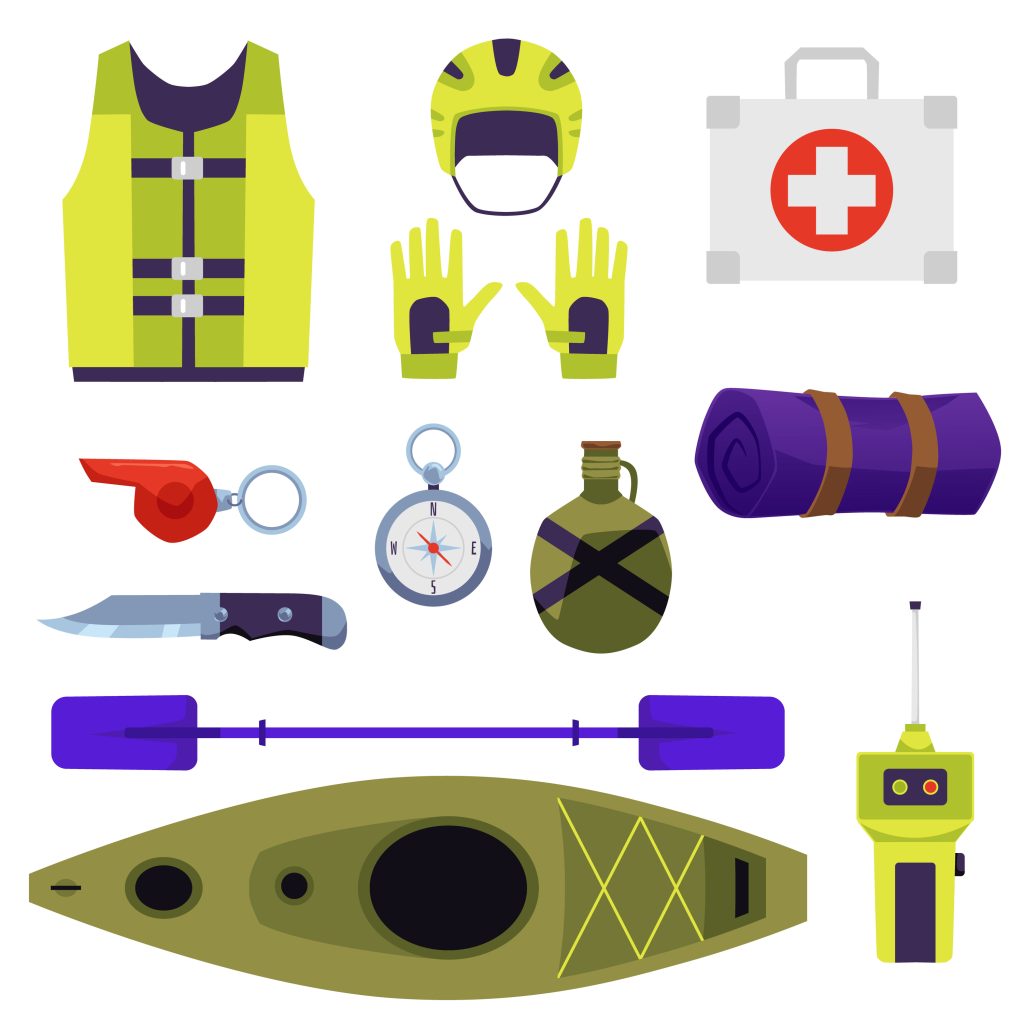
Kayak
Selecting the appropriate kayak is crucial for a successful roll. Ensure that the kayak is suitable for rolling by considering its size, shape, and type. Ensure it has adequate buoyancy, cockpit size, and a responsive design. Some common types of kayaks suited for rolling are:
- Whitewater kayaks: Specifically designed for maneuverability and moving in rapids.
- Sea kayaks: While not explicitly designed for moving, many have the necessary features for a successful roll.
Helmet
Wearing a helmet is crucial for a kayaker as it helps protect the head from impact with rocks, debris, or other hard surfaces. A good helmet should have the following:
- A sturdy outer shell made of materials like ABS plastic, fiberglass, or carbon fiber
- An inner lining that absorbs shock is usually made of expanded polystyrene (EPS) or polyethylene foam.
- Proper fit: Consider adjustable straps and padding for a secure and comfortable fit.
Paddle
Choosing the right paddle can significantly improve the effectiveness of a kayak roll. Consider these factors when selecting a paddle:
- Blade shape: Choose a paddle with a dihedral blade that reduces flutter and provides more power per stroke.
- Material: Options include wood, fiberglass, or carbon fiber, with each fabric offering different levels of durability, weight, and performance.
- Length: Paddle length varies based on the user’s height, boat width, and intended use.
Physical and Mental Preparation

Balance Training
When learning how to perform a kayak roll, balance training is essential. Developing good balance helps paddlers maintain control and stability in their kayak, making it easier to recover from capsizes. Practice balance by:
- Standing on a wobble board or cushioned surface enhances coordination and proprioception.
- They engage in yoga or pilates, focusing on core strength and balance.
- Paddling in calm waters and gradually progressing to more challenging conditions.
Breathing Techniques
Breathing techniques can significantly improve a kayaker’s focus and reduce stress when attempting a roll. Some practical exercises include:
- Diaphragmatic breathing: Breathe deeply into the abdomen, allowing the belly to expand before exhaling. This technique helps activate the diaphragm and encourages full oxygen exchange.
- Box breathing: Inhale in for a matter of four, hold the breath for four counts, exhale for four counts, and hold the breath out for four. Repeat the cycle to promote relaxation.
By incorporating balance training and proper breathing techniques in their regular practice, kayakers can learn to perform a kayak roll more efficiently and enhance their overall paddling experience.
Step-by-Step Kayak Roll

Capsize
The first step in performing a kayak roll is intentionally capsizing the boat. The kayaker should lean to one side and tuck their head down while keeping their paddle parallel to the ship. Doing this ensures they are in the correct position to execute the following actions.
Setup
Once the kayaker has capsized, they must prepare for the roll. The proper setup includes:
1. Position the paddle: While remaining upside down, the kayaker should place the blade flat on the water’s surface, perpendicular to the kayak.
2. Hip and knee positioning: The kayaker’s hips should be squared to the side where the paddle is placed, and their knees should be slightly bent for optimal control.
Rolling Up
With proper positioning in place, it’s time to perform the role:
- Sweep stroke: Using their upper hand, the kayaker will sweep across the water’s surface with the paddle. This creates momentum for the roll.
- Engaging the hip snap: The key to a successful roll is the hip snap. As the kayaker sweeps the paddle, they must simultaneously engage their hips and brace their knees against the boat. This motion rotates the kayak right-side up.
- Lift the head: Once the boat starts to right itself, the kayaker should keep its head close to the water’s surface and look towards the paddle.
- Recover: When the kayak is upright, the kayaker can swiftly sit up straight, place both hands back on the paddle, and continue their journey.
The kayak roll is essential for any kayaker, offering safety and confidence when navigating various water conditions. With practice, patience, and focus, any kayaker can master this technique.
Troubleshooting Common Mistakes

Incorrect Paddle Placement
One common mistake when performing a kayak roll is incorrect paddle placement. Make sure to position the paddle parallel to the water’s surface, with both blades breaking the surface. This will create greater leverage for your role. To achieve correct placement, ensure your grip on the paddle is firm, and keep your wrists clenched tightly. Avoid having the paddle too high, which may result in poor leverage, or too low, which can catch on the kayak’s hull.
Bracing Instead of Rolling
Another standard error is bracing instead of rolling. Bracing is a technique to prevent a capsize while moving is used to recover from one. When attempting a roll, focusing on using your hips and body movement to right the kayak is crucial rather than relying solely on your paddle for support. To avoid this mistake, practice hip flicks and proper body positioning to execute the roll without overreliance on your paddle effectively.
Not Keeping Head Down
Many kayakers fail to complete a successful roll because they do not keep their head down during the process. Keeping your head down helps to maintain balance and control throughout the maneuver. To correct this issue:
- Focus on looking at the boat throughout the entire motion
- Keep your head in line with your shoulders
- Tuck your chin toward your chest
You’ll be on your way to mastering the kayak roll by addressing these common mistakes and practicing proper technique.
Practicing the Kayak Roll
Before attempting the kayak roll, ensure you are comfortable with wet exits and have mastered basic bracing techniques. This will help you maintain balance during the registration and enable a quicker recovery in case of a failed attempt.
Initially, practice the kayak roll in a controlled environment like a swimming pool or calm water. Ensure you have a buddy or an experienced instructor nearby for safety and guidance. Start by developing muscle memory for the motions involved in the roll. To do this, follow these steps:
1. Setup position: Get into the setup position with your paddle above the water parallel to your kayak, knuckles facing up, and one hand close to your forehead.
2. Hip snap: Hold onto the edge of the pool or your buddy’s boat, and practice hip snapping by leaning your body and craft away from the edge, then quickly snapping your hips to flip the boat back upright.
3. Sweep stroke: While maintaining the setup position, practice the sweep stroke by extending your paddle from your body, sweeping it around in a wide arc, and pulling it back toward your body. Your lower arm should remain straight, while your upper arm should bend slightly. Your head should be turned in the direction of the sweep.
After mastering these individual components, it’s time to combine them for a complete kayak roll:
1. Capsizing: Find a comfortable way to capsize your kayak by leaning to one side or pushing off the pool’s edge.
2. Setup position: Once upside down, get into the setup position by reaching your paddle blade to the surface, parallel to the water.
3. Hip snap and sweep stroke: Initiate the hip snap while performing the sweep stroke. Keep your head close to the water, looking toward the sweeping paddle. Maintain firm contact between your thighs and the kayak to assist in the rolling motion.
4. Finishing the roll: As the kayak begins to right itself, follow the paddle with your head and focus on snapping your hips. Sit back up and center your body when the kayak is almost upright.
Repeat the complete kayak roll numerous times to build confidence and muscle memory. Once comfortable in controlled conditions, practice kayak rolls in moving water, choppier conditions, or waves to further develop your skills and confidence in various situations.
Tips and Techniques for Rolling
Rolling a kayak is crucial for kayakers, especially in whitewater or rough sea conditions. There are different types of kayak rolls, but the most common one is the “Eskimo roll” or “standard roll.” Here are some tips and techniques to help you improve your kayak rolling skills:
Remember that rolling a kayak can be physically demanding, so gradually building up your strength and stamina is essential. Always prioritize safety and practice with a partner or in the presence of someone who can assist you. With regular practice and perseverance, you’ll become more proficient at rolling your kayak and feel more comfortable on the water.
Why Is It Important To Learn How To Roll A Kayak?

Learning to roll a kayak is vital for several reasons, and it can significantly improve your safety, confidence, and overall kayaking experience. Here are some reasons why learning to roll a kayak is essential:
1. Self-Rescue: One of the primary reasons to learn to roll a kayak is self-rescue. If you capsize in challenging conditions or rough water, having a reliable rolling skill allows you to quickly right your kayak and continue paddling without exiting the kayak or relying on external assistance.
2. Increased Safety: Rolling is crucial, especially in whitewater or sea kayaking. It reduces the risk of being trapped underwater in a capsized kayak and minimizes the chances of becoming separated from your kayak and paddle.
3. Confidence Building: Knowing how to roll a kayak can boost your confidence in the water. When you can recover from a capsize, you will likely take on more challenging conditions and explore new paddling opportunities.
4. Efficient Paddling: Rolling is an efficient way to get back upright without losing momentum or expending excess energy. It lets you maintain your position and direction, making your paddling experience more enjoyable.
5. Independent Paddling: Learning to roll makes you less reliant on external kayaking assistance. You can rely on your skills and self-rescue techniques, particularly when paddling in remote areas or without a group.
6. Emergency Preparedness: Rolling is essential in emergencies, such as entrapment in rocks or debris in whitewater. It increases your ability to handle unexpected situations and respond quickly to potential hazards.
7. Adaptability: Different rolling techniques can be used in various water conditions and kayak types. Knowing multiple rolling methods allows you to adapt to different situations and paddle confidently in diverse environments.
8. Connection to Kayaking Culture: For some paddlers, learning traditional rolling techniques, such as the Greenland roll, connects them to the historical and cultural aspects.
9. Preventing Swims: A successful roll prevents “swims” when a paddler has to exit the kayak after a capsize. Staying in the kayak means less exposure to cold water, which can help prevent hypothermia.
10. Support Others: If you become proficient at rolling, you can assist other paddlers who might need help with their rolls, fostering a sense of camaraderie and community on the water.
Overall, learning to roll a kayak is a valuable safety skill and enhances your overall paddling experience, allowing you to navigate challenging waters with confidence and independence. It is a skill worth investing time and effort in for any serious kayaker.
Conclusion
In summary, mastering the kayak roll is essential for kayakers of all levels. It enables self-rescue and ensures safety in various water conditions. Practice is vital to perfecting the roll and increasing confidence in the water.
Remember to maintain proper body positioning, focus on the hip snap, and utilize paddle support throughout the roll. It is crucial to remain relaxed and patient as the process may take time to perfect. Joining a local kayaking club or enrolling in a dedicated rolling course can provide invaluable guidance and support.
By taking a systematic approach to learn and practicing the kayak roll, kayakers can improve their overall paddling skills, increase their confidence in challenging situations, and maximize their enjoyment on the water.





